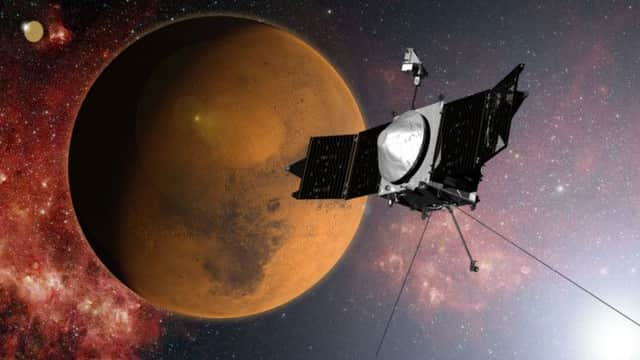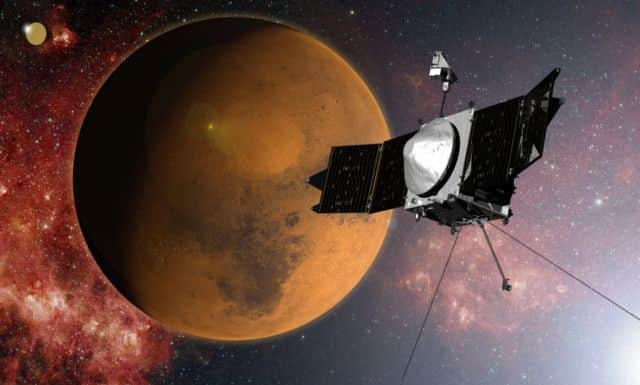Maven slams on brakes at 10,000mph to orbit Mars


The robotic explorer fired its brakes and successfully slipped into orbit around the red planet, officials confirmed.
“This is such an incredible night,” said John Grunsfeld, Nasa’s chief for science missions.
Advertisement
Hide AdAdvertisement
Hide AdNow the real work begins for the £411 million mission, the first dedicated to studying Mars’ upper atmosphere.


Flight controllers in Colorado will spend the next six weeks adjusting Maven’s altitude and checking its science instruments. Then Maven will start probing the upper atmosphere of Mars. The spacecraft will conduct its observations from orbit – it’s not meant to land.
Scientists believe the Martian atmosphere holds clues as to how Earth’s neighbour went from being warm and wet billions of years ago to cold and dry. That early wet world may have harboured microbial life, a tantalising question yet to be answered.
Nasa launched Maven last November from Cape Canaveral, the tenth US mission sent to orbit the red planet. Three earlier ones failed, and until the official word came of success late Sunday night, the entire team was on edge.
“I don’t have any fingernails any more, but we’ve made it,” said Colleen Hartman, deputy director for science at Goddard Space Flight Centre in Greenbelt, Maryland. “It’s incredible.”
The spacecraft was clocking more than 10,000mph when it hit the brakes for the so-called orbital insertion, a half-hour process. The world had to wait 12 minutes to learn the outcome, once it occurred, because of the lag in spacecraft signals given the 138 million miles between the two planets.
“Based on observed navigation data, congratulations, Maven is now in Mars orbit,” came the official announcement. Flight controllers applauded the news and shook hands, and laughter filled the previously tense-filled room.
Maven joins three spacecraft already circling Mars, two American and one European. And the traffic jam is not over: India’s first interplanetary probe, Mangalyaan, will reach Mars in two days and also aim for orbit.
Advertisement
Hide AdAdvertisement
Hide AdMaven’s chief investigator, Bruce Jakosky, of the University of Colorado’s Laboratory for Atmospheric and Space Physics in Boulder, hopes to learn where all the water on Mars went, along with the carbon dioxide that once comprised an atmosphere thick enough to hold moist clouds.